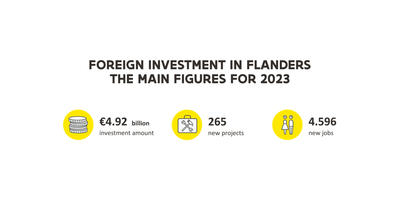
Why NASA’s lunar mission uses sensors from Flanders

A crew of manikins on a mission
An impressive 98 meters long, the SLS rocket was designed to put the Orion, an unmanned spacecraft, into orbit around the moon. Aboard the Orion, there are no astronauts, but that doesn’t really mean there’s no crew! The spacecraft carries eight manikins: Commander Moonikin Campos and his crewmates Helga and Zohar. The latter two are equipped with 11,200 sensors provided by a consortium of eight laboratories, including Flanders-based SCK CEN. While Commander Moonikin Campos will monitor the pressures and stresses experienced by astronauts during launch, Helga and Zohar will measure exposure to cosmic rays during lunar missions.
“The manikins’ bones, tissue and lungs are made of plastic composed of the same natural elements as human tissue: carbon, nitrogen, hydrogen and oxygen,” says Olivier Van Hoey, radiation expert at SCK CEN. “The goal is to carry out measurements in preparation for an upcoming manned lunar mission. We know that the radiation around the moon – coming from both the sun and exploding stars outside our solar system – is different and stronger than the radiation to which we are exposed on Earth. The radiation detectors on Helga and Zohar will measure the radiation dose experienced by astronauts on lunar missions down to the organ level.”
Putting a special space vest to the test
But it doesn’t end there. Unlike the Helga manikin, Zohar is wearing a unique radiation protection vest, developed by an American and an Israeli company. What makes it unique is the fact that the vest is thicker in areas that are more sensitive to radiation. Van Hoey: “Every pound sent off into space costs handfuls of money. So, you need to distribute the weight of such a vest optimally. That's why it’s thicker around the lungs and spinal cord, for instance, as well as around breast tissue for women’s suits.”
Reliable data to protect astronauts
The measurements carried out during the Artemis I mission are set to make a huge difference for future missions. Van Hoey: “Based on studies on Earth with radiation particles similar to cosmic rays, there are indications that lunar and Mars missions could result in increased cancer risk in the long term. We also know that in the short term, solar storms could lead to severe burns or even organ failure if astronauts were to be on the lunar surface without adequate protection in such an event.”
“To better protect astronauts during future space, lunar and Mars missions, we must understand the space environment in detail based on highly reliable data,” Van Hoey adds. “If all the labs within our consortium reach the same conclusions independently using detectors like ours, then the data’s reliability will greatly increase.”


